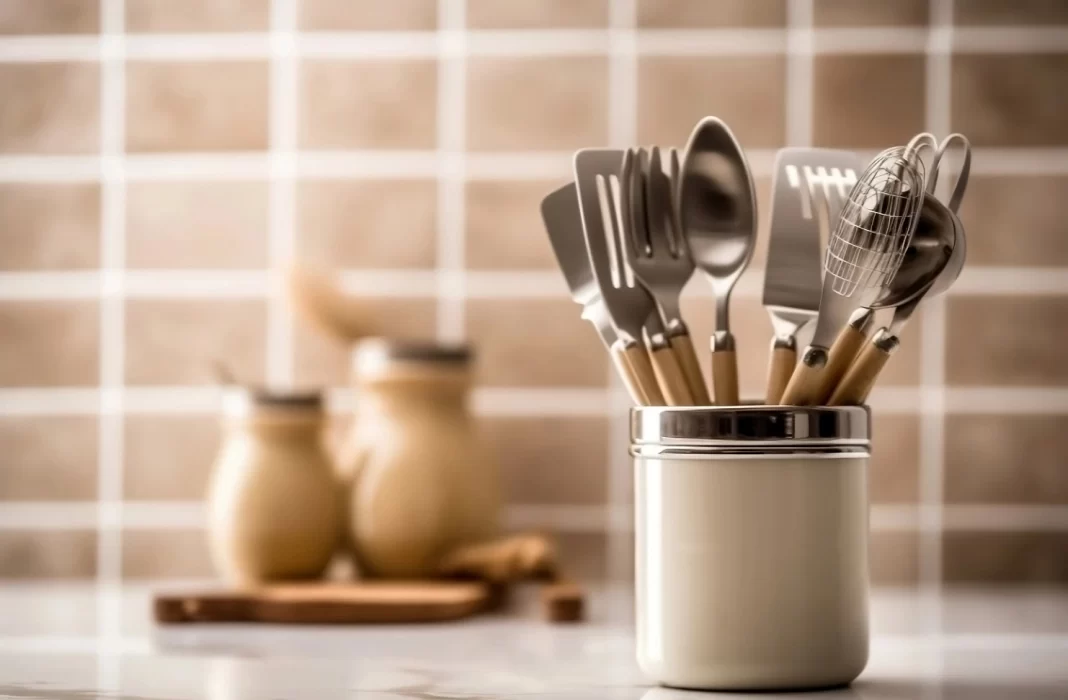Opening a restaurant? Your kitchen setup will decide if you run smoothly or sink fast. Choose the wrong tools, and you’ll burn cash on breakdowns, high energy bills, and wasted time. Choose right, and your back-of-house runs sharp, clean, and efficient.
This restaurant kitchen equipment buying guide explains exactly what to get, how to choose it, and what to avoid so your kitchen supports your business, not drags it down.
Why Restaurant Equipment Selection Matters for Your Business
Walk into any failing restaurant’s kitchen. You’ll see the same problems: equipment that breaks down during the dinner rush, appliances that eat electricity like candy, and tools that make simple tasks take forever.
Smart restaurant owners think differently. They know that quality commercial kitchen equipment pays for itself through lower operating costs, better food quality, and happier staff. When your ice maker works reliably and your gas ranges heat evenly, everything else gets easier.
The numbers don’t lie either. Upgrading to Energy Star-rated appliances can lower utility costs by 15–30%, with some businesses saving up to $4,000 annually. That’s real money back in your pocket every month.
Understanding Your Commercial Kitchen Needs
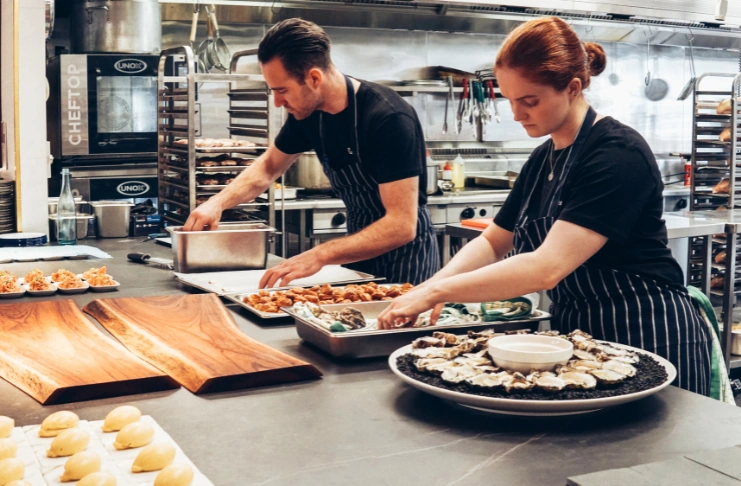
Before you buy a single piece of restaurant equipment, you need to get honest about what you’re actually building.
Assessing Your Restaurant Concept
Your concept drives every equipment decision. Are you opening a coffee shop that would need an espresso machine? A pizza joint that relies on ovens, or a fine dining restaurant where precision matters more than speed?
Here’s the thing – most new owners get starry-eyed about equipment they’ll never use. That oven may look impressive, but if you’re running a burger joint, you probably need a reliable flat-top grill more than a steam cooking system.
Fast-casual places win on speed and consistency. Your commercial toaster needs to pump out breakfast sandwiches real quick, and your food processors should handle prep work that would take staff hours to do by hand.
Fine dining is different. You need equipment that gives you control. Professional gas ranges respond instantly when you adjust the flame, and commercial ovens hold precise temperatures for delicate dishes.
Calculating Kitchen Space Requirements
Measure twice, buy once. Seriously.
Your kitchen space determines everything from your restaurant equipment list to your daily workflow. Too much equipment in too little space creates chaos, and too little equipment in a big space wastes valuable counter space and kills efficiency.
Start with your must-have items. How much room do you need for food prep counters? Where will your cooking equipment go? Don’t forget about storage racks and shelving – you need somewhere to put everything.
Pro tip: Plan for staff movement. Your team needs room to work without bumping into each other. Tight spaces lead to accidents and slow service.
Determining Your Menu Requirements
Your menu is your roadmap. Every dish tells you something about the kitchen equipment you need.
Count how many menu items need grilling, baking, or frying. If 80% of your dishes come off the grill, invest in a great gas or electric grill system. If you bake fresh bread daily, your commercial ovens become priority number one.
Don’t plan for the menu you want someday. Plan for the menu you’re opening with. You can always add equipment later when you’re making money.
Key Factors When Buying Restaurant Equipment
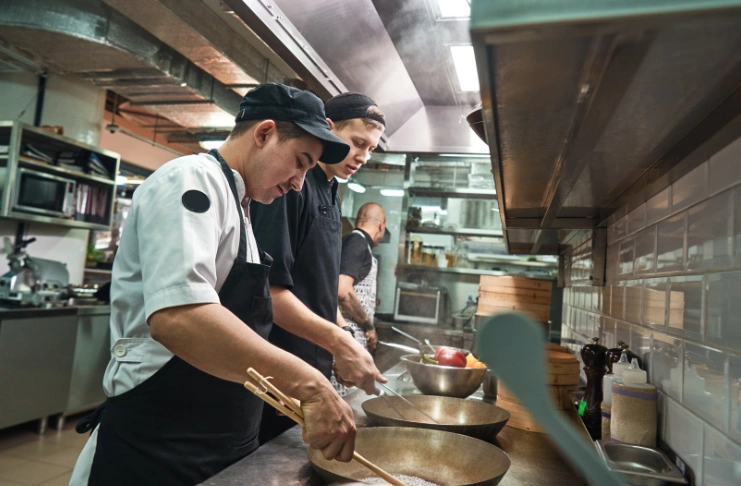
Smart buying isn’t about finding the cheapest price. It’s about finding the best value for your specific situation.
Budget Planning and Cost Considerations
Restaurant equipment costs more than the sticker price. Way more.
Add up the real costs: equipment price, delivery, installation, staff training, and ongoing maintenance. That $5,000 commercial oven might cost $7,500 by the time it’s working in your kitchen.
Energy-efficient appliances cost more upfront but save money every month. A high-efficiency ice maker might cost $500 more than a basic model, but if it saves $50 monthly on your utility bills, you break even in 10 months.
Consider financing for major purchases. Spreading costs over time keeps cash flow healthy during your critical first months. Just make sure the monthly payments fit comfortably in your budget.
Energy Efficiency Standards
Energy costs add up fast in commercial kitchens. The right equipment choices can save thousands annually.
Look for Energy Star certification on everything from commercial ovens to ice makers. These labels represent the equipment’s real, tested energy-saving capability. A score of 75 or higher means that the tool is more energy-efficient than at least 75% of similar models nationwide.
Don’t ignore utility rebates, either. Many power companies offer cash back for buying energy-efficient equipment. These rebates can offset higher purchase prices while cutting your long-term operating costs.
Safety Regulations Compliance
You can’t open your doors until your kitchen equipment passes inspection. Local health departments will check everything from how your refrigeration holds temperature to how easily your counters can be sanitized.
Every piece of restaurant kitchen equipment must be safe to operate, easy to clean, and built to meet strict health and safety regulations.
Install proper ventilation systems to control grease and heat. Use smart storage racks to avoid cross-contamination. And make sure you have the right safety equipment because even a single oversight can shut you down before you start.
Essential Commercial Kitchen Equipment Categories

Here’s what you need to actually cook food, serve customers, and keep your kitchen running without delays or breakdowns.
Cooking Equipment Essentials
Your cooking line is the engine of your restaurant. If it stalls, everything behind it falls apart.
Gas ranges give you fast, responsive heat. They are reliable even during power outages and are often preferred by chefs who want precise flame control.
Electric ranges give you steady temperature and easier cleanup. If your menu needs consistency more than speed, these are worth considering. Utility costs also matter. In many cases, gas will reduce operating costs over time.
You’ll also need commercial ovens that match your volume. Convection ovens use fans to circulate hot air, giving you even results with less cooking time. These work well in kitchens that need to move products fast without compromising food quality.
If you want one unit that covers baking, steaming, roasting, and reheating, go for combination ovens. These improve efficiency, reduce equipment clutter, and help deliver consistent results.
Food Prep Counters and Preparation Tools
Prepping well is what separates chaos from control. The right food prep counters speed up the process, reduce errors, and improve output.
Choose stainless steel surfaces that resist stains and bacteria. Size your prep areas based on your busiest service. Make sure the height is comfortable for long shifts.
Food processors should handle repetitive tasks like slicing, chopping, and mixing. These save time and deliver consistent results, especially during peak hours.
Use cutting boards that are strong, color-coded, and easy to sanitize. Differentiate boards for meats, vegetables, and ready-to-eat items to reduce the risk of cross-contamination.
Storage Racks and Shelving Solutions
Organization prevents chaos. Good storage systems keep ingredients fresh, accessible, and properly rotated.
Invest in adjustable and rust-resistant storage racks and shelving. Stainless steel is best for durability and cleanliness.
Choose food storage containers that are clear, stackable, and labeled. This helps with visibility and inventory control.
Plan for first-in, first-out rotation. Older stock should always be easy to reach and use first. This cuts down on waste and supports proper food safety.
Refrigeration and Food Storage
Don’t compromise on cold storage. Poor temperature control ruins food and invites violations.
Use walk-in coolers to handle bulk items. These should be sized for your peak inventory needs, especially if you prep in large batches or serve a high volume.
Reach-in refrigerators should be placed close to the cooking line for quick access. Select models that meet energy efficiency standards without slowing performance.
A good ice maker is essential for serving drinks and presenting food. Make sure yours can handle demand during peak days or seasonal surges.
INDUSTRY INSIGHT
| The restaurant equipment market is growing fast. Sales jumped from $3.88 billion in 2024 to an expected $4.2 billion in 2025. That’s 8.3% growth in a single year. What’s behind the numbers? Restaurant owners are getting more strategic. They’re choosing energy-efficient equipment to reduce utility bills and investing in smart equipment that tracks usage, flags issues, and helps avoid downtime. Their goal isn’t just to cook food anymore. It’s to run kitchens that are faster, leaner, and more reliable. |
How to Choose Gas or Electric Grill Systems
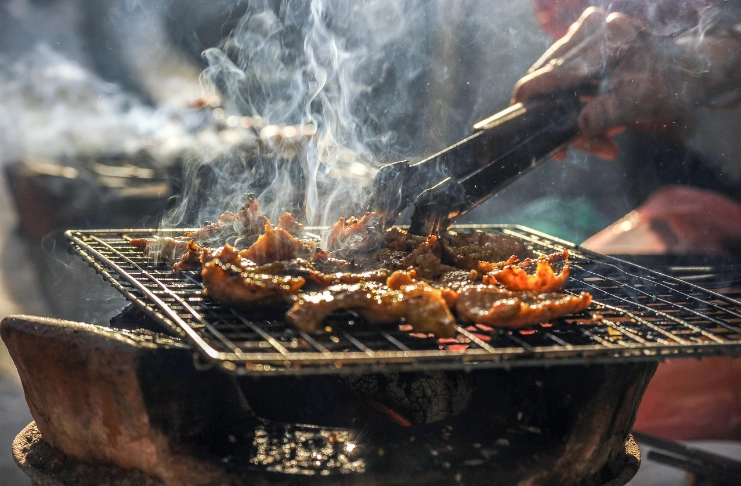
Your grill system sets the pace for your kitchen. It affects cook times, consistency, and energy bills. Here’s how to pick the right system for your operation.
Gas Ranges vs Electric Ranges Comparison
Gas wins for most restaurants. Here’s why:
- Gas ranges respond instantly when you adjust the heat. Turn the knob, get immediate results. Professional cooks love this control, especially during busy service periods.
- Gas typically costs less to operate than electricity, and natural gas prices stay more stable than electricity rates in most markets.
- Gas equipment keeps working during power outages. You can still cook food and serve customers when the lights go out.
Electric ranges have their place, though. They provide more consistent temperatures for delicate cooking and are easier to clean and maintain. Electricity might make more sense in areas with expensive gas or limited gas service.
Commercial Ovens Selection Guide
Your oven choice depends on what you’re cooking and how much volume you need.
Convection ovens cook faster and more evenly than standard ovens. They use fans to circulate hot air around food, making them perfect for baking, roasting, and reheating large quantities quickly.
Combination ovens combine steam and convection cooking in one unit. They steam vegetables perfectly, then switch to convection for finishing. These versatile units replace multiple pieces of equipment while improving food quality.
Pizza ovens create the high heat needed for authentic pizza. Wood-fired ovens provide traditional flavor but require skilled operation, while gas pizza ovens offer consistent results with easier operation.
Food Preparation Equipment Guide
Prep work determines how well your service runs. The right tools save labor, maintain hygiene, and improve consistency.
Toasters:
- Conveyor toasters handle bulk toasting for breakfast and sandwich stations.
- Pop-up toasters work for lower-volume operations with made-to-order menus. Choose commercial-grade models that handle heavy use without overheating.
Food processors speed up repetitive tasks. Match capacity to your daily prep volume to avoid overuse or underperformance.
Commercial mixers are essential for high-volume doughs, batters, and sauces. Multi-attachment models improve versatility.
Knives and cutting boards must be food-safe and task-specific. Color-coded systems reduce cross-contamination. Keep knives sharp to avoid slow prep and safety risks.
Work surfaces should be stainless steel for durability and hygiene. They should be sized based on task flow, not leftover space.
Specialized Restaurant Kitchen Equipment
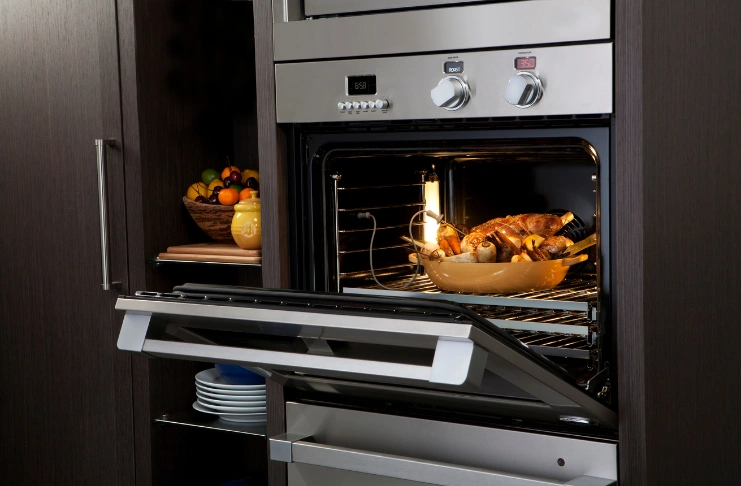
Some restaurants need specialized equipment for signature items or unique cooking methods.
Pizza Ovens for Different Restaurant Types
Pizza restaurants need serious heat – 800°F or higher for authentic results.
Wood-fired ovens provide traditional flavor and impressive visual appeal. They require skill to operate and maintain consistent temperatures, making them great for restaurants that make pizza part of the dining experience.
Gas pizza ovens offer consistent temperatures with easier operation. They heat up faster and maintain steady temperatures without constant attention. Better choice for high-volume operations.
Electric pizza ovens work in locations with limited gas service or ventilation restrictions. They provide consistent results but lack the traditional flavor of wood or gas-fired units.
Combination Ovens and Steam Cooking Systems
Combination ovens are game-changers for restaurants that want versatility and quality.
These units steam, bake, roast, and reheat in one machine. They save space while improving food quality. Steam cooking preserves nutrients and moisture while cooking faster than traditional methods.
Programming capabilities ensure consistent results regardless of which cook is operating the equipment. Staff can follow preset programs instead of relying on experience and guesswork.
Steam tables keep prepared dishes at safe serving temperatures during service. Size your steam tables based on your buffet needs and peak serving volumes.
Ice Maker Selection and Sizing
Ice seems simple until you run out during a busy dinner service.
Size your ice maker for peak demand. Summer months, special events, and busy weekends can double your ice needs overnight.
Different ice shapes serve different purposes. Cubed ice works well for drinks, while flake ice attractively displays seafood. Choose ice types based on your actual menu needs.
Water quality affects ice taste and machine performance. Plan for water filtration if your local water has mineral or taste issues.
Bar Sinks and Dishwashing Solutions
Clean dishes and proper sanitation keep your restaurant running legally and safely.
Commercial Dishwasher Types
Your dishwasher choice affects everything from labor costs to health department compliance.
Under-counter dishwashers work well for smaller operations with limited space. They handle moderate volumes while fitting under standard counter heights.
Conveyor dishwashers handle high volumes efficiently. Dirty dishes go in one end, and clean dishes come out the other. They are perfect for high-volume operations that generate lots of dishes quickly.
High-efficiency dishwashers reduce water and energy consumption while meeting sanitation requirements. Energy Star-qualified units provide the best combination of performance and efficiency.
Bar Sink Configurations
Bar areas need specialized sink configurations for efficient beverage service.
Three-compartment bar sinks provide separate areas for washing, rinsing, and sanitizing glassware. Size your bar sinks based on glassware volume and service style.
Hand sinks meet health department requirements and provide convenient hand hygiene for staff. They should be placed strategically throughout kitchens and service areas.
Prep sinks handle vegetable washing and ingredient preparation away from dishwashing areas. This separation prevents contamination and improves workflow.
Ventilation Systems and Safety Equipment
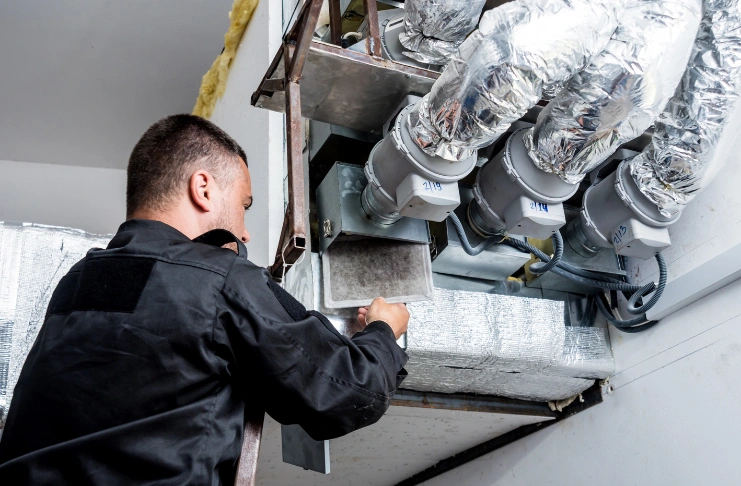
Proper ventilation keeps your kitchen comfortable and safe while meeting building code requirements.
Hood and Exhaust Requirements
Commercial kitchen ventilation removes heat, smoke, grease, and odors that would otherwise make your kitchen unbearable.
Ventilation systems must match your cooking equipment and local codes. Underpowered systems create uncomfortable working conditions, while overpowered systems waste energy and money.
Professional design and installation ensure proper airflow and code compliance. Improper installation can shut down your operation until corrections are made.
Make-up air systems replace exhausted air to maintain proper kitchen pressure and efficiency. Without adequate make-up air, your exhaust system works harder and costs more.
Fire Suppression Systems
Kitchen fires happen fast and spread faster. Automatic suppression systems detect and suppress fires before they destroy your restaurant.
These systems are required in most commercial kitchens. They activate automatically when they detect high heat or flames over cooking equipment.
Regular professional inspection and maintenance keep suppression systems ready when needed. System failures can shut down your operation until repairs are completed.
Smart Equipment and Technology Integration
Modern restaurant technology makes operations smoother and more profitable.
Kitchen Display System Benefits
Kitchen display systems replace paper tickets with digital screens that improve accuracy and timing.
Digital displays show order details clearly and track timing automatically. Kitchen staff can see which orders are running behind and prioritize accordingly.
Integration with point of sale systems eliminates duplicate data entry and reduces order errors. Changes and modifications appear instantly on kitchen screens.
Performance data helps identify bottlenecks and optimize staffing. You’ll know which menu items take the longest to prepare and which stations need more help.
Point of Sale Integration
Modern point of sale systems coordinate ordering, kitchen operations, inventory, and payment processing in one platform.
Such integration eliminates manual data entry between systems. Orders flow automatically from the front of the house to the kitchen display systems, and inventory adjusts automatically based on sales.
Customer data collection enables targeted marketing and loyalty programs. Digital receipts reduce costs while providing customer contact information for follow-up marketing.
Energy Efficient Appliances
Smart equipment monitors performance and optimizes energy usage automatically. Remote monitoring identifies maintenance needs before equipment fails.
Programmable controls ensure consistent results regardless of operator experience. Preset programs reduce training time while improving food quality and consistency.
Energy monitoring systems track usage by equipment type. This data identifies inefficient equipment and justifies replacement decisions with hard numbers.
Where to Buy Restaurant Equipment
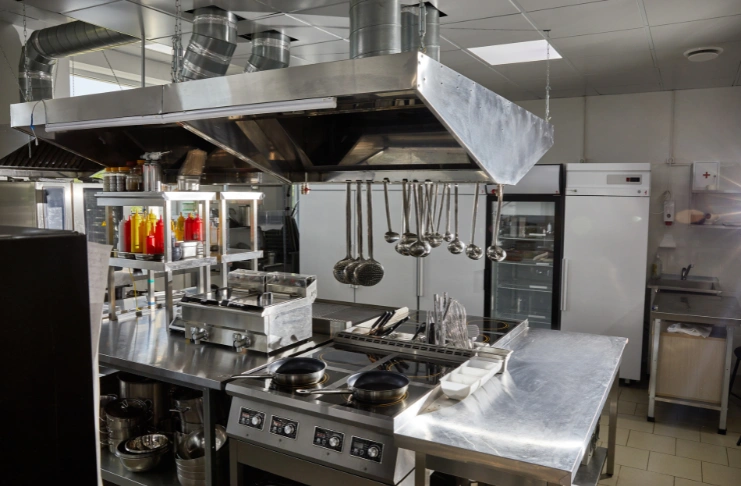
Choosing the right supplier affects more than just cost. It determines the reliability of your equipment, the support you receive, and how fast you can get back on track if something breaks.
Restaurant Supply Stores offer the advantages of local service, in-person inspections, and quick delivery. Before you make the final purchase, you can test the equipment, ask technical questions, and check the build quality. Many also offer repair services and emergency part replacements.
Online Equipment Retailers often provide broader selections and competitive prices. You’ll find everything from niche tools to major appliances. Look for vendors with verified buyer reviews, clear return policies, and customer support that extends beyond checkout.
Second-hand equipment Dealers can significantly cut startup costs, but only if you know what you’re looking at. Inspect for wear, test all functions, and verify that parts are still manufactured. Used equipment may not come with a warranty or installation help.
Leasing companies provide equipment without upfront costs. Leases often include maintenance and replacement options, which can help newer restaurants preserve cash flow. But you’ll pay more over time, and the terms matter.
Warranty and Installation Considerations
Commercial kitchen equipment should have at least a one-year parts and labor warranty. Some manufacturers offer extended plans, especially for high-cost appliances like refrigeration units, ovens, and dishwashers. Always ask:
- Does the warranty cover on-site service or just parts replacement?
- How long does the service typically take?
- Who performs the repairs: factory technicians or third-party contractors?
A cheap unit without a reliable warranty can cost more downtime than you save upfront.
Installation Requirements
Professional installation is often required to activate your warranty. DIY setup may void the coverage, especially for gas and high-voltage electric appliances. It’s also a safety issue – improper installation can lead to gas leaks, equipment damage, or failed inspections.
Coordinate with licensed installers who understand commercial kitchen layouts, local fire codes, and ventilation requirements. Schedule installations in sync with your health inspections and opening timeline to avoid delays.
Also, confirm whether your supplier includes delivery, setup, and calibration. A few hundred dollars extra for a professional install can save thousands in lost service hours or failed inspections.
Common Mistakes When Buying Restaurant Kitchen Equipment
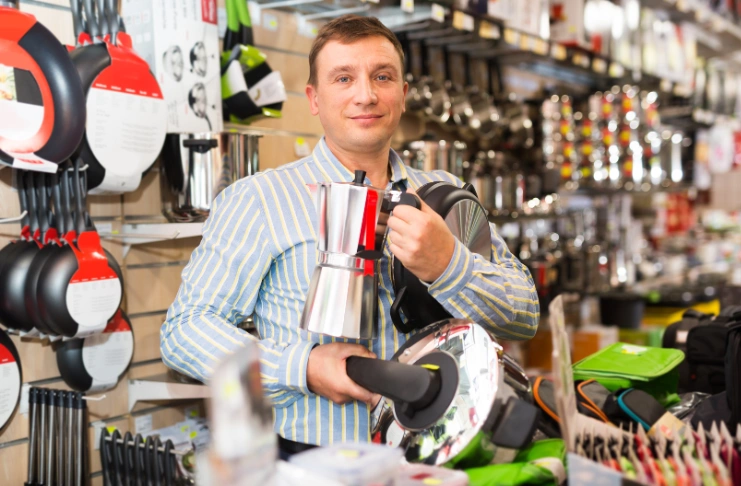
Learn from others’ expensive mistakes instead of making your own.
Buying based on price alone usually backfires. Cheap equipment breaks down frequently and uses more energy. Focus on total ownership costs rather than just purchase prices.
Overbuying equipment wastes money and valuable kitchen space. Size the equipment based on realistic projections. Unused capacity provides no value.
Ignoring utility requirements creates expensive installation surprises. Verify electrical, gas, and water requirements before purchasing, and factor upgrade costs into your budget.
Skipping staff training reduces equipment effectiveness and increases breakdown risk. Plan training time for all new equipment. Proper operation prevents damage and ensures optimal performance.
Failing to plan for growth can result in expensive changes later. When selecting equipment, consider expansion plans. Modular systems often provide better flexibility than integrated units.
Making the Final Purchase
Ready to pull the trigger? Here’s how to make smart final decisions.
Create a prioritized restaurant equipment list based on your menu and realistic volume projections. Buy essentials first, add nice-to-have items as cash flow improves.
Compare total costs, including purchase, delivery, installation, training, and ongoing expenses. The lowest purchase price rarely provides the best total value.
Get quotes from multiple suppliers to ensure competitive pricing. Local dealers may cost slightly more but provide better ongoing service value.
Plan implementation timing to minimize operational disruption. Install equipment during slow periods when possible and have contingency plans for delays.
Verify warranty coverage and service availability before finalizing purchases. Understand exactly what’s covered and how to access the service when needed.
Conclusion
Opening a restaurant means investing in equipment that works as hard as you do. From cooking systems to cold storage, every piece must serve a purpose, meet safety standards, and fit your kitchen’s workflow. Choose wisely, plan for maintenance, and partner with suppliers who stand behind what they sell. The right equipment won’t just keep your kitchen running; it’ll help your business grow.
Frequently Asked Questions
1. How to choose the right equipment for your restaurant?
Start with your menu and expected volume, then match equipment to your actual needs. Consider kitchen space, budget, and staff capabilities. Energy efficiency and reliable service support matter more than rock-bottom prices.
2. What are the factors to consider when buying kitchen equipments?
Budget planning, energy efficiency, safety compliance, space limitations, menu requirements, and volume projections drive smart equipment choices. Don’t forget installation costs, staff training needs, and ongoing maintenance requirements.
3. What equipment is required for a commercial kitchen?
Basic requirements include cooking equipment, refrigeration, food prep tools, dishwashing facilities, ventilation systems, and safety equipment. Specific needs vary by restaurant type and local health department requirements.
4. How much does it cost to buy restaurant equipment?
Costs vary widely based on restaurant size and concept. Basic setups start around $40,000-60,000 for small operations. High-end restaurants can invest $200,000 or more. Used equipment reduces initial costs but may increase maintenance expenses.
5. What determines the equipment selected for a commercial kitchen?
Menu requirements drive equipment selection more than any other factor. Volume projections determine capacity needs. Kitchen space limits options. Budget constraints require prioritizing essentials first.
6. What are the factors to consider when selecting kitchen equipment?
Capacity planning, energy efficiency, maintenance requirements, warranty coverage, service availability, equipment compatibility, and regulatory compliance all affect smart equipment selection decisions.
7. What equipment should a commercial kitchen have?
All commercial kitchens need cooking equipment, refrigeration, food prep tools, cleaning facilities, ventilation systems, and safety equipment. Storage solutions and point-of-sale integration improve efficiency. Specific needs vary by concept.
8. What is the most common tool in a commercial kitchen?
Knives are used constantly throughout every service. Professional-quality knives improve efficiency and safety while reducing staff fatigue. Cutting boards, mixing bowls, and basic hand tools are also used daily.
9. What are the factors to consider in selecting the equipment?
Functionality must match cooking and prep needs. Quality affects reliability and food consistency. Size should match realistic volume projections. Cost considerations include purchase, installation, training, and ongoing expenses.
10. Which ten points would you consider while buying and using equipment?
Menu requirements, volume projections, kitchen space, budget constraints, energy efficiency, maintenance costs, warranty coverage, local regulations, staff training needs, and service availability guide smart equipment decisions.
11. What factors to keep in mind before selecting or purchasing food service equipments?
Food safety compliance, energy efficiency, maintenance requirements, staff training needs, installation requirements, service availability, warranty coverage, local health regulations, operational efficiency, and total ownership costs all matter for long-term success.


